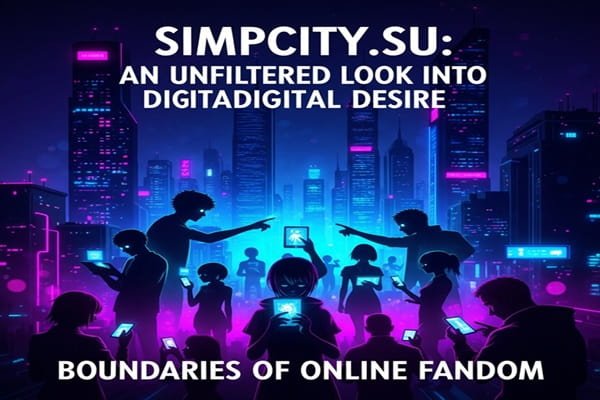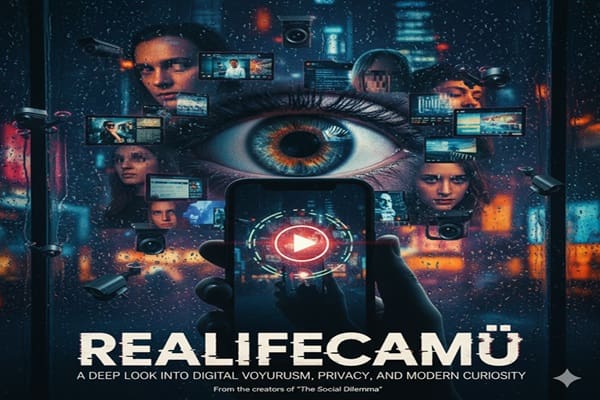Simpcity.su: An Unfiltered Look Into Digital Desire and the Boundaries of Online Fandom

We live online now — in spaces where the lines between public and private blur every day. In that landscape, Simpcity.su stands out (or haunts, depending on your view) as a stark reflection of modern obsession, social media worship, and the vulnerability of digital personas.
At first glance, the name Simpcity.su feels cheeky. “Simps,” after all, are part of internet slang. But dig deeper, and Simpcity isn’t just satire — it’s a battleground where fan culture, identity, and digital ethics collide.
This piece isn’t a simple site profile. It’s a cultural analysis: Why Simpcity exists, what it reveals about parasocial relationships, and what we risk when admiration slips into intrusion.
1. Anatomy of Fixation: What Simpcity.su Actually Is
Simpcity.su functions like a digital archive for internet personalities, especially those active on TikTok, Instagram, OnlyFans, and similar platforms. It’s not an official extension of these sites — instead, it thrives in parallel, collecting images, posts, commentary, speculations, and at times, content intended to remain private or paywalled.
It’s structured much like a classic forum, with user-created threads, categories, reputations, and private messaging. But its focus is narrower: exposure, appearance, mystery, and access. Some threads are celebratory, others voyeuristic. Some collect artistically, others leak confidential content.
Users often justify it as “archiving the internet,” but underneath, you’ll find an ecosystem that rewards voyeurism, curiosity, and the symbolic currency of private information.
2. From “Simp” to Subculture: The Mechanics of Devotion
“Simp” used to be an insult. Today, in some corners online, it’s an identity. On Simpcity, that identity has evolved into something more complex.
-
Admiration meets surveillance: Members track every upload, story, or social media update in excruciating detail.
-
Exalted access: Knowing the timing of a post or the source of a screenshot becomes a badge of insider knowledge.
-
Obsessive fandom: Threads dissect influencers’ lives — personal relationships, unposted photos, possible leaks — all in the name of devotion.
Here, fans don’t just consume content. They pursue it. They analyze it. They own it. The boundary between audience and archivist disappears.
3. When Consent Doesn’t Exist: The Ethics Behind the Screens
One of the most disturbing layers of Simpcity is how lightly it treats consent and ownership.
-
Screenshots from paywalled platforms like private Snapchat or OnlyFans often surface. Content creators didn’t intend for those images to be republished.
-
Copyright violations are routine. Users repost, rehost, repackage content — sometimes in violation of DMCA or intellectual property rights.
-
Jurisdictional gray zones help the site avoid accountability. With a “.su” domain — a legacy internet extension — legal action becomes messy, slow, or impossible.
Even more insidious is the emotional toll. Many creators report feeling stalked, dissected, and dehumanized. Every image becomes fodder. Every private moment, public speculation.
4. Parasocial Bonds on Steroids
We’ve long understood parasocial relationships — the illusion that a viewer knows someone famous. With social media, that illusion has multiplied.
Simpcity amplifies it. It turns admiration into forensic analysis:
-
Creators’ facial expressions, surroundings, or background noise are parsed to determine relationships or mental states.
-
Users scrutinize patterns in uploads or posting frequency to speculate on health or personal life.
-
Every comment, emoji, or deleted post is proof in a case they’re constructing.
This isn’t a fan page. It’s surveillance masquerading as fandom.
5. Silence, Censorship, and Power Asymmetry
Simpcity’s moderation — such as it is — is fragile and inconsistent. The few rules in place do little to curb harassment, invasion, or exploitation.
Because the platform is loosely regulated:
-
Users operate with near impunity unless they cross into what’s “overtly illegal.”
-
Content often stays posted long enough to circulate widely before being taken down.
-
Enforcement is uneven: verbal abuse might be excused among “fans,” while direct offenses may get slow or partial responses.
The dynamic is stark: those with cameras and screens hold power — and creators, especially those most visible, bear the consequences.
6. Female Creators, Exposure, and Unequal Burdens
A sobering reality: most of the personalities targeted on Simpcity are women. This is no coincidence.
-
Female creators often balance visibility with privacy, monetizing content while policing their own boundaries.
-
Simpcity dismantles those boundaries, replaying them in public space without consent.
-
The emotional labor falls almost entirely on creators — damage control, policing reposts, psychological toll — while posters enjoy distance and anonymity.
The platform weaponizes identity, treating creators’ bodies and lives as free data.
7. Profits Without Ownership
While Simpcity doesn’t charge a membership fee, that doesn’t mean there’s no monetization.
-
Mirror sites often copy content and embed third-party ads.
-
Affiliate links and vaults sometimes funnel users to paid communities.
-
Traffic-based revenue becomes profit built on creators’ images.
In essence, content created by vulnerable individuals becomes raw material in a hidden marketplace.
Also Read : Finnorth: A New Framework for Northern Identity, Sustainable Growth, and Digital Transformation
Where to Go from Here: Toward Accountability
Platform tools: Creators need better safeguards — watermarking, traceable repost alerts, stricter content control. Platforms themselves should prioritize re-share audits.
Legal evolution: Copyright, privacy, and image rights laws need updating. International cooperation and fast takedown processes are essential.
Rethinking fandom: Respect and boundaries must return to discussions of admiration. Fandom shouldn’t excuse intrusion.
Media literacy: Teach users — especially younger ones — how parasocial obsession can become unethical. Respect begins with awareness.
Final Thoughts: Simpcity.su as a Symptom, Not the Disease
Simpcity.su isn’t an outlier — it’s a symptom of a bigger breakdown in how we view creators, privacy, and power online.
It forces us to ask:
-
How much access is too much?
-
Where do we draw lines between admiration and harassment?
-
And in an age when anyone’s post can go viral, who has the right to control their own image?
Whether Simpcity fades or morphs into something else, the questions it raises will stay with us. Because in a digital world where everyone watches and some are watched more closely than they know — how do we reclaim dignity, autonomy, and the right to be seen on our own terms?
FAQs
-
What is Simpcity.su?
A digital forum centered around discussion, archiving, and sometimes leaking content tied to internet personalities. It mixes fandom, surveillance, and speculation. -
Is using or contributing to Simpcity legal?
It depends. Viewing might not break laws, but sharing copyrighted or private content often does. The .su domain complicates takedowns. -
Why do people engage despite risks?
The allure of insider status, voyeuristic interest, and parasocial attachment — the line between admiration and intrusion fades. -
Can creators protect themselves?
To some extent: watermarking, active repost monitoring, limited exposure, legal takedowns. But enforcement remains difficult. -
What does Simpcity reveal about internet culture?
It exposes how we commodify humans online, how privacy becomes performance, and how admiration can warp into entitlement.
content ethics digital fandom digital obsession influencer culture internet culture online boundaries online privacy parasocial relationships Simpcity.su social media trends
Last modified:




